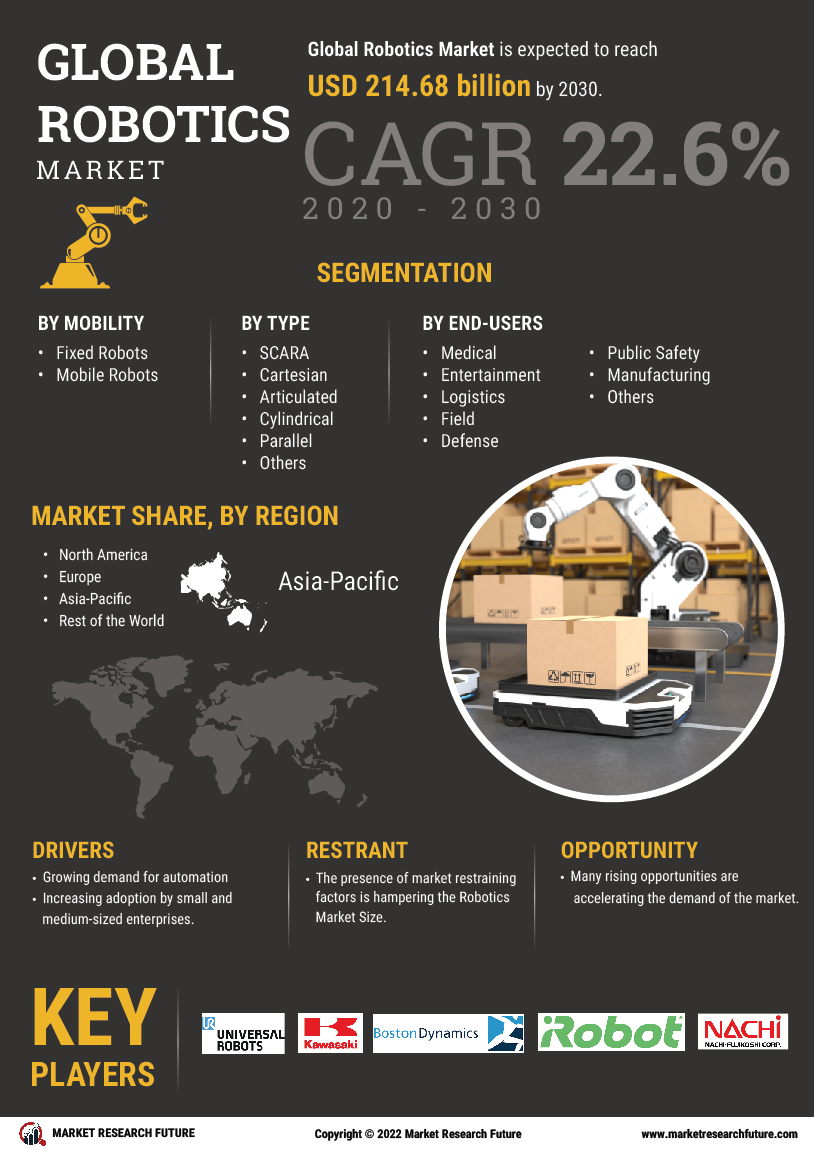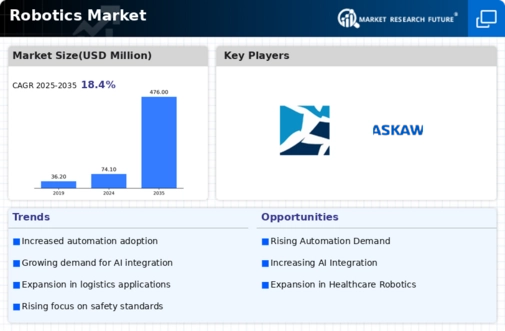By Region, the study provides market insights into North America, Europe, Asia-Pacific, Middle East & Africa, and South America. In terms of revenue, Asia-Pacific held the largest share of 50.4% in the Robotics Market in 2023 and is expected to maintain its dominance during the forecast period. The Asia-Pacific is the largest market for Robotics Market. Because it has more financial institutions than any other, the region has attracted international investors. Local players dominate the Asia-Pacific market, resulting in severe entry hurdles. Furthermore, owing to significant electronic and automobile manufacturing industry deployment, South Korea and China are prominent in robotics adoption.
Asia is the world's largest market for industrial robotics, with nearly three quarters of all newly deployed robots installed there in 2022. The Japanese government declared financing for the development of eldercare robots in order to meet a projected 380,000 trained workforce shortage by 2025.Recent robotic trends in Japan include relaxing traffic laws to enable food delivery robots and the increased use of elder care robots at nursing homes. Robots are also expected to help Japan solve the problem of Labor shortages.
South Korea is one of the leading countries in the use of industrial robots worldwide, with the International Federation of Robotics Market listing it as having the world's second most automated manufacturing industry .The region is also known for robots used in the healthcare sector. Hyundai Motor Works with Medical Centers in Korea to Utilize Its Wearable Robot ‘X-ble MEX’ for Patient Rehabilitation. Advancements are also seen in the food industry using robots for various processes. ABB Robotics Market and Korean food company Pulmuone are exploring AI-based automation to develop lab-grown sea food.
Hospitality robots are seen in development by key players in the industry in many South Korean hotel chains.
China's automotive sector has grown tremendously, and it now plays a critical role in the global automotive market. The Chinese government considers the automobile industry, particularly the auto components business, to be one of the country's primary pillar industries. The central government of China expects that the country's automobile output will reach around 35 million units by 2025. China-based Humanoid Robots has unveiled Qinglong, a life-size general-purpose humanoid robot at the World Artificial Intelligence Conference (WAIC) 2024.The region has also guidelines for future humanoid development.
Figure3:ROBOTICS MARKET SIZE BY REGION 2023&2032
Further, the major countries studied in the market report are the U.S., Canada, Germany, France, the UK, Italy, Spain, China, Japan, India, Australia, South Korea, and Brazil.
North America is one of the earliest adopters of industrial robotics due to the due to the swift adoption of smart factories and industrial automation. The region is also one of the leading automotive manufacturing markets after Europe and Asia. One of the primary drivers of growth in the North American robotics market can be attributed to expansions in the medical and healthcare industries. Robotic surgery, remote surgical procedures, remote consultation, and emergency services employing robotic arms have spurred the expansion of the robotics industry in North America.
ABB is investing $20 million to expand its North American robotics headquarters and manufacturing facility in Auburn Hills. This expansion aims to increase production capacity and strengthen ABB's leadership in the US robotics market. Many key players have their robotics and automation facilities in this region including FANUC America its new 650,000-square-foot as announced latest. Companies are focusing on AMR robots, medical robots. Autonomous Mobile Robots (AMRs) streamline material handling and logistics in dynamic environments like warehouses.
Robotics Market companies are leveraging advanced vision systems powered by AI to enhance perception capabilities Industrial robots dominate manufacturing processes, performing tasks such as welding, assembly, and packaging with high precision and efficiency.
The European robotics market is expanding rapidly due to this aspect. Germany is the leading country for robots and hence more advancements in robotics is seen in this region. Germany's manufacturing industry has the highest robot to employee density in Europe. Generative AI for the development of new robot systems, improvement of robot control and development of new robotics applications is seen in this region. Amazon has announced over €700 million investment in robotics and AI powered technologies across Europe.
The industrial revolution is about to begin in nations like the United Kingdom because data is being used extensively for production and integrated with several manufacturing systems throughout the supply chain.












Leave a Comment